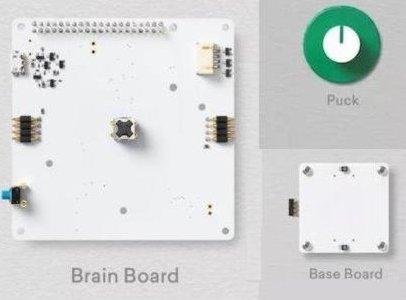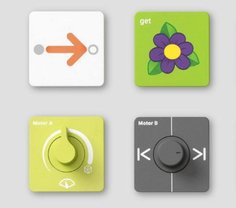| Google Project Bloks Tangible Programming For Kids |
| Written by Janet Swift | |||
| Wednesday, 29 June 2016 | |||
|
Google Research is working on a new initiative to introduce kids to computing in ab entirely hands-on, physical way. A prototype has been produced to show how it the tangible programming approach combines the way children innately play with learning with computational thinking. As explained in this introductory video Project Bloks is a research project with the aim of creating an open hardware platform to help developers, designers, and researchers build the next generation of tangible programming experiences for kids.
The project is a collaboration between Google Creative Lab, design consulting firm IDEO and Paulo Bilkstein, Assistant Professor of Education at Stanford University. In the video Bilkstein refers to the long history of tangible programming stretching back to Seymour Papert in the 1970s. The Google Research blog post announcing Project Bloks goes further back and says that it: is preceded and shaped by a long history of educational theory and research in the area of hands-on learning. From Friedrich Froebel, Maria Montessori and Jean Piaget’s pioneering work in the area of learning by experience, exploration and manipulation, to the research started in the 1970s by Seymour Papert and Radia Perlman with LOGO and TORTIS. Block is intended to make coding a fun activity for young children by putting it in the context of collaborative play and introducing interactivity with the real world, for example switching light bulbs on and off. Unlike Scratch Block or Blockly, where the drag and drop blocks are snippets of software, in this case they are physical control modules, called Pucks, that provide signals to go, stop, turn on and off, etc.
The system comprises three hardware components:
The main control interface, the Brain Board is built on a Raspberry Pi Zero module. It is the communication interface with the other components as well as providing power, Wi-Fi and Bluetooth connectivity. The Base Boards are connectible blocks, onto which Pucks can be placed. They are modular and can be connected in sequence and in different orientations to create different programming flows and experiences They also provide both haptic and LED feedback to the user when that control is activated and can send audio feedback to the Brain Board.. When a Puck is placed onto a Base Board it is then connected directly, or via another base board, to the Brain Board and sends that specific command back to the software. According to Google Research: Pucks are what make the Project Bloks system so versatile. They help bring the infinite flexibility of software programming commands to tangible programming experiences. Pucks can be programmed with different instructions, such as 'turn on or off', 'move left' or 'jump'. They can also take the shape of many different interactive forms—like switches, dials or buttons. With no active electronic components, they're also incredibly cheap and easy to make. At a minimum, all you'd need to make a puck is a piece of paper and some conductive ink. Development on the project began in 2013, and it's being unveiled now so that Google can start gauging developer interest and finding partners who want to use the platform to build toys and educational products with it. To show how designers, developers, and researchers might make use of the system, the Project Bloks team has created a reference device, called the Coding Kit. This lets kids learn basic concepts of programming by allowing them to put code bricks together to create a set of instructions that can be sent to control connected toys and devices - including the drawing robot shown in this video: As this video shows, the motivation for Project Bloks is educational. The team's position paper, Project Bloks: designing a development platform for tangible programming for children concludes: Research and design for children is our passion. Designing the Project Bloks system was, above all, an exercise to demonstrate how much children can accomplish with the right tools, how much they can learn when they are not told what to do, and how much reward exploration can bring them. The vision of Seymour Papert 50 years ago was a powerful one: children will program the computer. It won’t be the other way around.
More InformationProject Bloks: Making code physical for kids Project Bloks: designing a development platform for tangible programming for children (pdf) Paulo Blikstein (Stanford University), Arnan Sipitakiat (Chiang Mai University, Thailand), Jayme Goldstein (Google), João Wilbert (Google), Maggie Johnson (Google), Steve Vranakis (Google), Zebedee Pedersen (Google), Will Carey (IDEO). Related ArticlesScratch Blocks For Beginners In Developer Preview Google Blockly - A Graphical Language with a Difference Coder - Raspberry Pi As a Web Development System Teaching Coding To The Next Generation To be informed about new articles on I Programmer, sign up for our weekly newsletter, subscribe to the RSS feed and follow us on, Twitter, Facebook, Google+ or Linkedin.
Comments
or email your comment to: comments@i-programmer.info
|
|||
| Last Updated ( Wednesday, 29 June 2016 ) |




